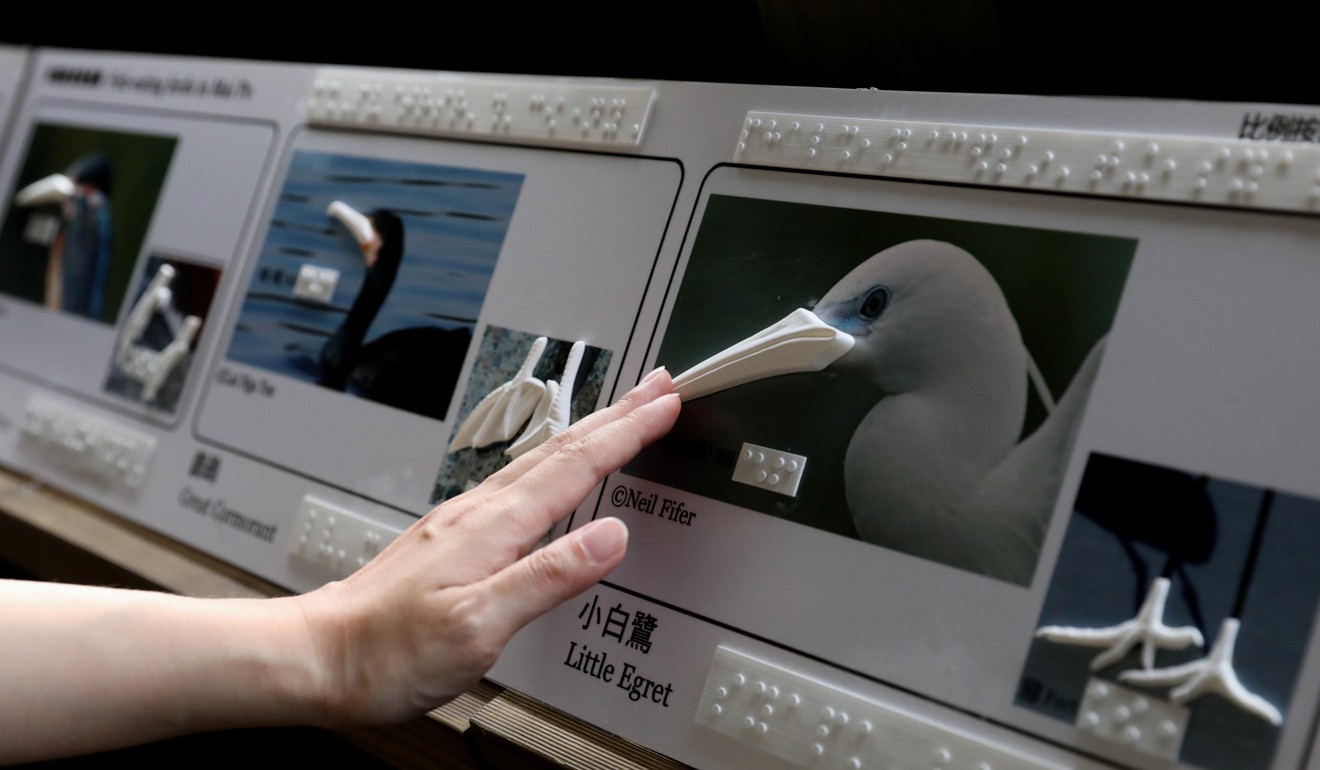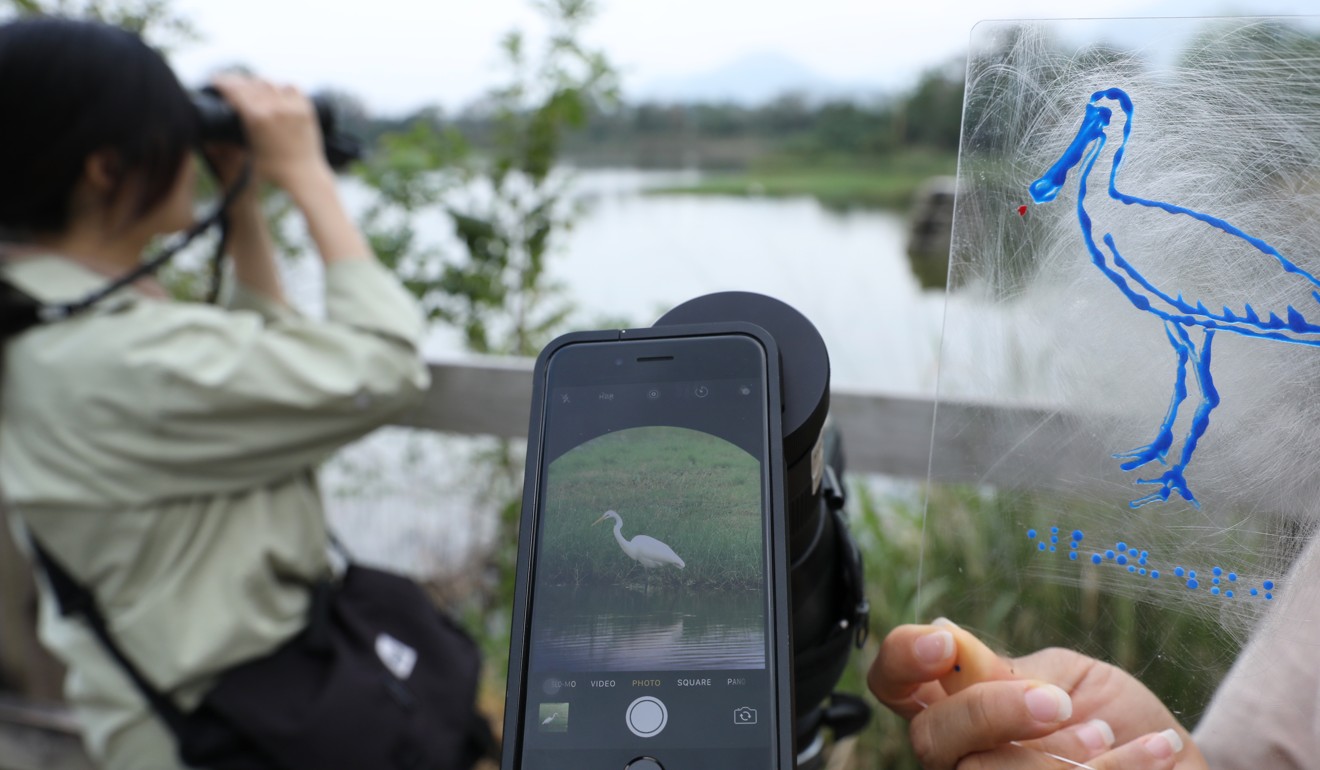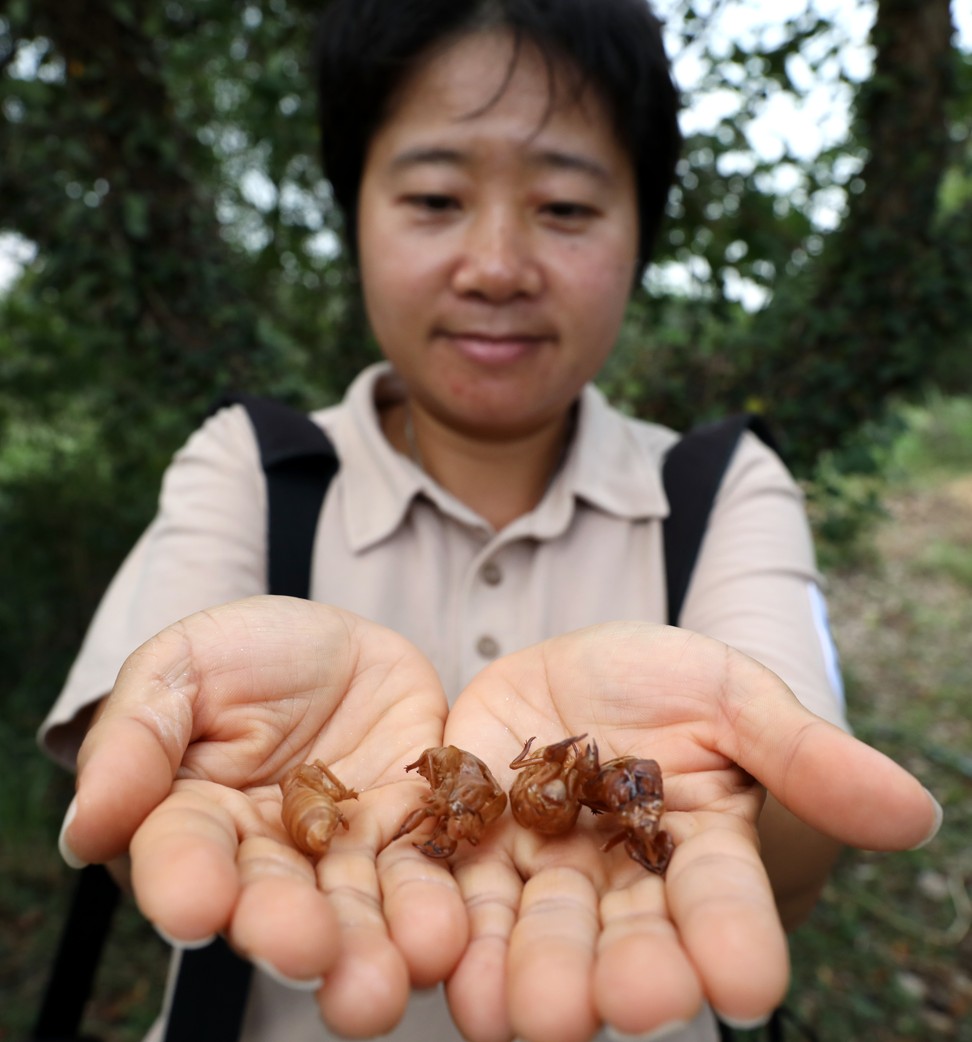
WWF Hong Kong’s mission to ensure visit to Mai Po nature reserve is walk in the park for all, including less able-bodied
- Conservation body has improved ramps and trails for easier access for wheelchair users
- Other enhancements include Braille and 3D-printed props for those with visual impairments
Navigating Mai Po nature reserve in Hong Kong’s Deep Bay may be a walk in the park for most visitors, but for those who are not as able-bodied, touring the migratory bird haven could be challenging.
To address these obstacles, conservation body WWF Hong Kong, which manages the nature reserve, began upgrading some of the park’s facilities three years ago as part of its “Nature with No Barriers” project. The aim is to make such areas more accessible and inclusive.
Data from the Census and Statistics Department showed that in 2013, 578,600 people in Hong Kong had physical, mental and learning disabilities.
Need a wheelchair-accessible optician in Hong Kong? This is the place for you
The WWF recently renewed its invitation to special groups to apply for free guided tours at the reserve.
“We used to get less able-bodied people joining our regular guided tours, but it wasn’t ideal because they couldn’t participate in certain activities due to difficulties with accessibility,” says Cheung Sze-man, a veteran guide at the reserve.
“However, since the launch of the project, we’ve been seeing a lot more opportunities for such guests, as well as their carers, to enjoy birdwatching”
We’ve been seeing a lot more opportunities for such guests, as well as their carers, to enjoy birdwatching
Improvements made include ramps leading to bird hideouts and the placement of safety barriers along the sides of a wooden bridge to boost security for wheelchair users.
Irene Chong Shuk-fong, an employment officer at the Hong Kong Physically Handicapped and Able-Bodied (PHAB) Association, says wheelchair users who joined the barrier-free guided tour were impressed by the new facilities.
“We would love to have more of these tours. Wheelchair users in particular have fewer opportunities like these because they need special vehicles to transport their wheelchairs to the location, and with limited space on some vehicles, they often cannot share the experience with fellow wheelchair users,” Chong says.
Meanwhile, guides have received training in basic sign language to enhance communication with deaf visitors. Amelia Leung Lai-ting, a welfare worker at the Hong Kong Society for the Deaf, says her organisation would also like to see more of these barrier-free tours.

“Not everyone had the chance to go on the tour as the quota was small,” Leung says. “And some members may not be able to afford to go on their own.”
Regular tours for adults can cost HK$300 or more, depending on the itinerary.
Since the launch of the project in early 2016, the reserve has seen more than 4,500 visitors with special needs. Every tour group comprises about 20 people, including carers.
Hong Kong ‘must catch up with Taiwan’ to become a disability-friendly city
Other modifications include Braille and 3D-printed props to enhance the sensory experiences of those with visual impairments, special training for guides, as well as adapted educational material for visitors with intellectual disabilities.

But making these enhancements proved challenging at times. During the colder months, tens of thousands of migratory birds swoop into Mai Po, making it an ecologically sensitive area.
“We had to be careful not to negatively impact wildlife while modifying existing facilities, and we did so by making improvements during summer and low tide, when the birds have flown off to the mudflats in Deep Bay,” says Wen Xianji, assistant director of the reserve.
We had to be careful not to negatively impact wildlife while modifying existing facilities
As a continuation of the project, the WWF will be making further improvements to existing facilities, including building a wide, wooden boardwalk in place of existing roads to create smoother journeys – whether on wheels or foot.
“The boardwalk will be raised slightly to allow space for wildlife to pass through underneath,” Wen says.
The WWF will also be using wireless digital telescopes that enable visitors to observe birds in real time and in greater detail on smart devices.
“When we built Mai Po nature reserve more than 30 years ago, we didn’t really consider these needs,” Wen says.
“But now, we realise it’s important for everyone to have the equal right to enjoy nature.”


